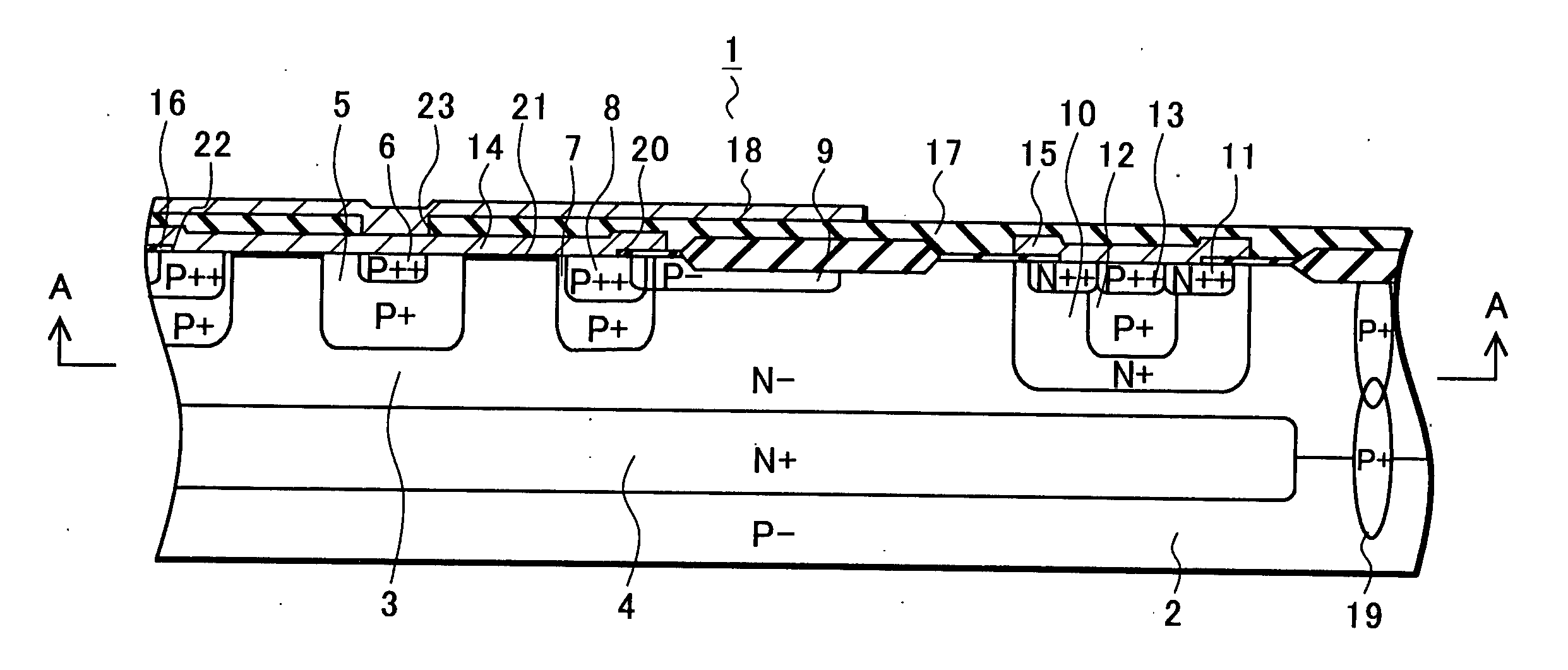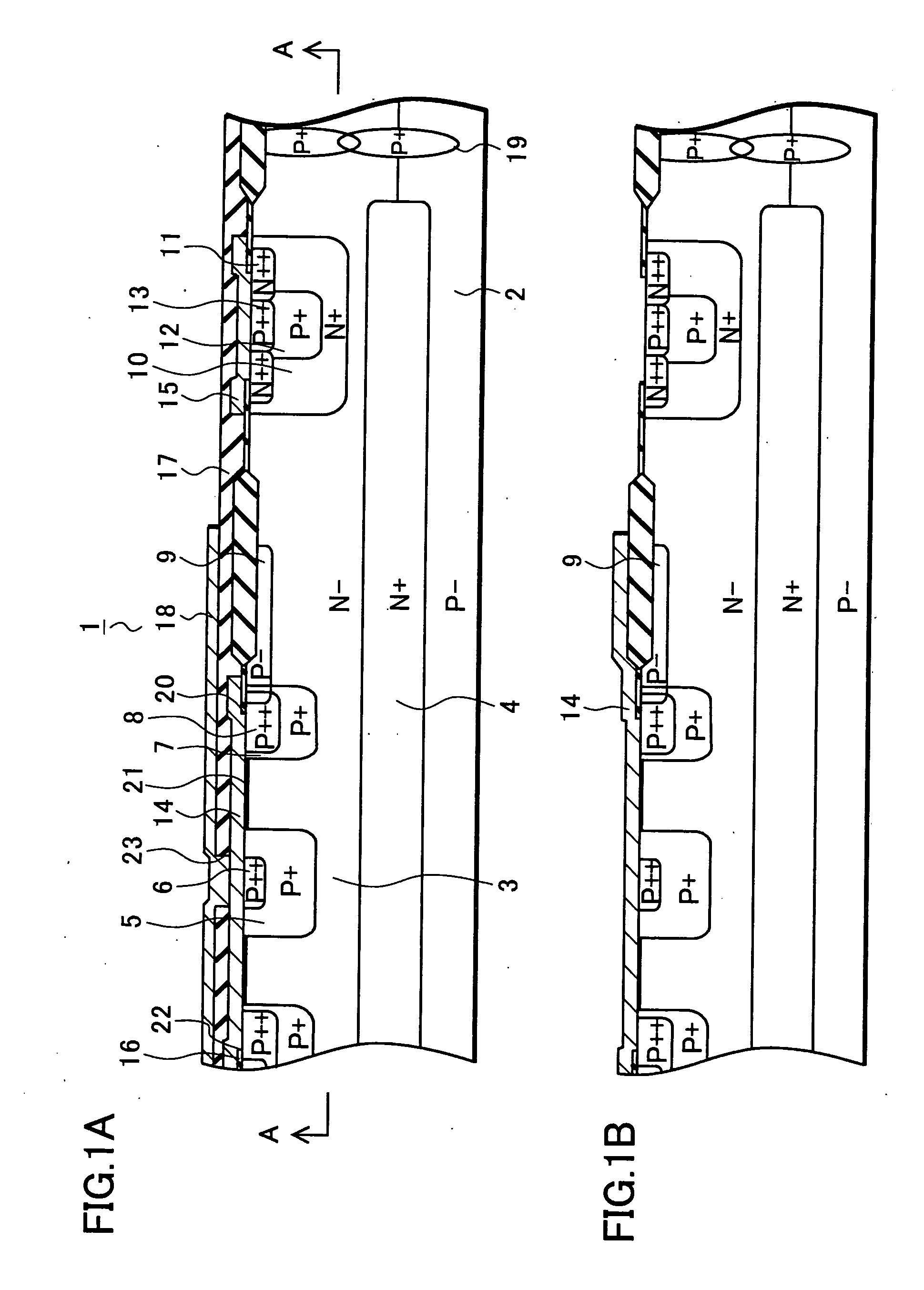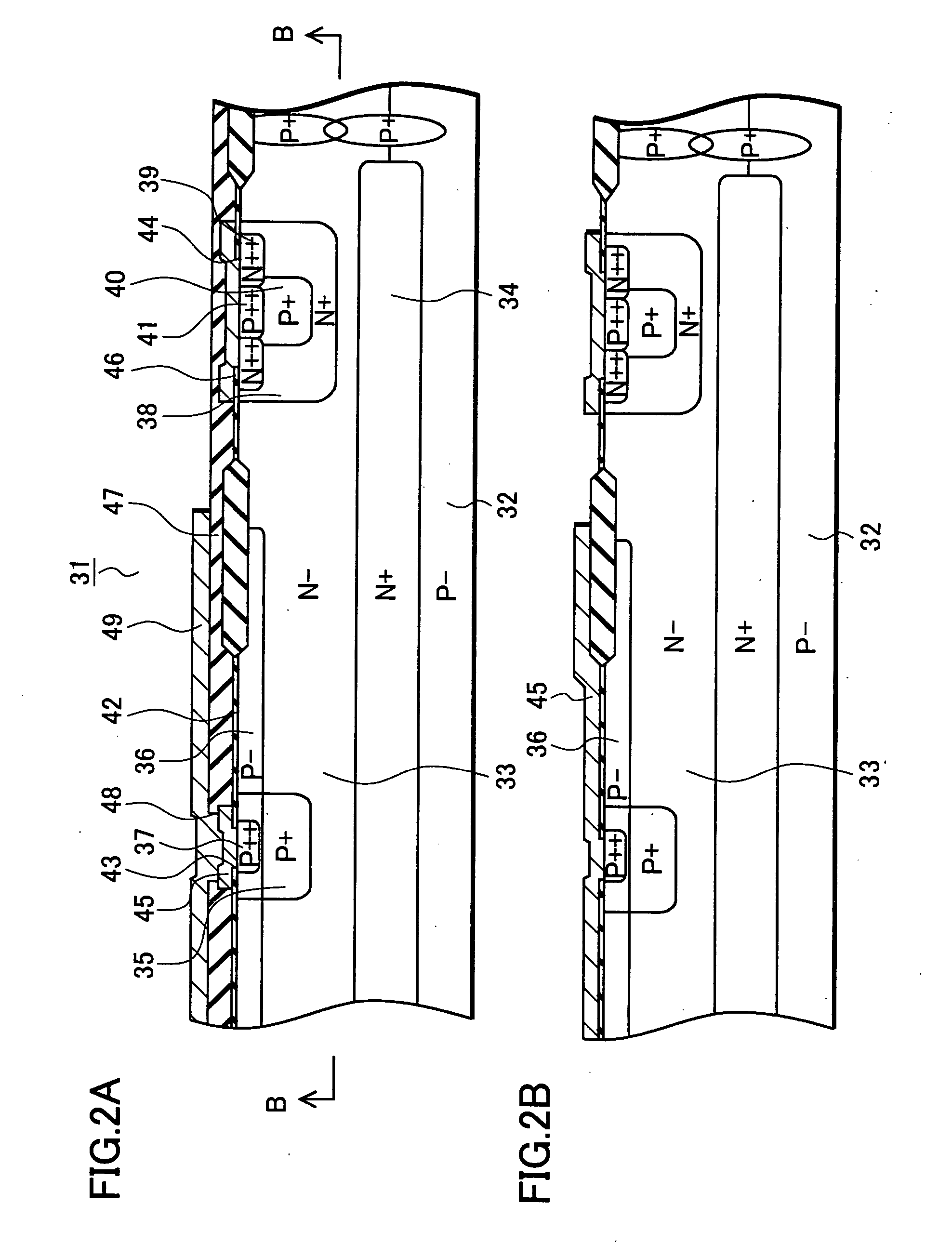Semiconductor device
a semiconductor and device technology, applied in semiconductor devices, magnetotherapy using permanent magnets, medical science, etc., can solve the problems of difficult to achieve a desired withstand voltage characteristic, difficult to reduce an on-resistance value, and excessive storage of minority carriers (holes) of free carriers. , to achieve the effect of preventing the deterioration of the withstand voltage characteristic, preventing and suppressing the expansion of the depletion layer
- Summary
- Abstract
- Description
- Claims
- Application Information
AI Technical Summary
Benefits of technology
Problems solved by technology
Method used
Image
Examples
Embodiment Construction
[0028] The following will specifically explain a semiconductor device according to one embodiment of the present invention with reference to FIGS. 1 to 7. FIG. 1A and FIG. 1B are cross-sectional views each explaining a protection diode according to one embodiment of the present invention. FIG. 2A and FIG. 2B are cross-sectional views each explaining a Zener diode according to the embodiment. FIG. 3 is a view explaining a forward voltage (Vf) of each of the protection diode and a Zener diode according to the embodiment. FIG. 4 is a view explaining a circuit into which the protection diode is incorporated according to the embodiment. FIG. 5A is a view explaining an electric potential distribution of the protection diode in a reverse bias state according to the embodiment. FIG. 5B is a view explaining an impact ionization occurring region in the protection diode according to the embodiment. FIG. 6 is a view explaining an electric potential distribution of the protection diode in a reve...
PUM
 Login to View More
Login to View More Abstract
Description
Claims
Application Information
 Login to View More
Login to View More - R&D
- Intellectual Property
- Life Sciences
- Materials
- Tech Scout
- Unparalleled Data Quality
- Higher Quality Content
- 60% Fewer Hallucinations
Browse by: Latest US Patents, China's latest patents, Technical Efficacy Thesaurus, Application Domain, Technology Topic, Popular Technical Reports.
© 2025 PatSnap. All rights reserved.Legal|Privacy policy|Modern Slavery Act Transparency Statement|Sitemap|About US| Contact US: help@patsnap.com



